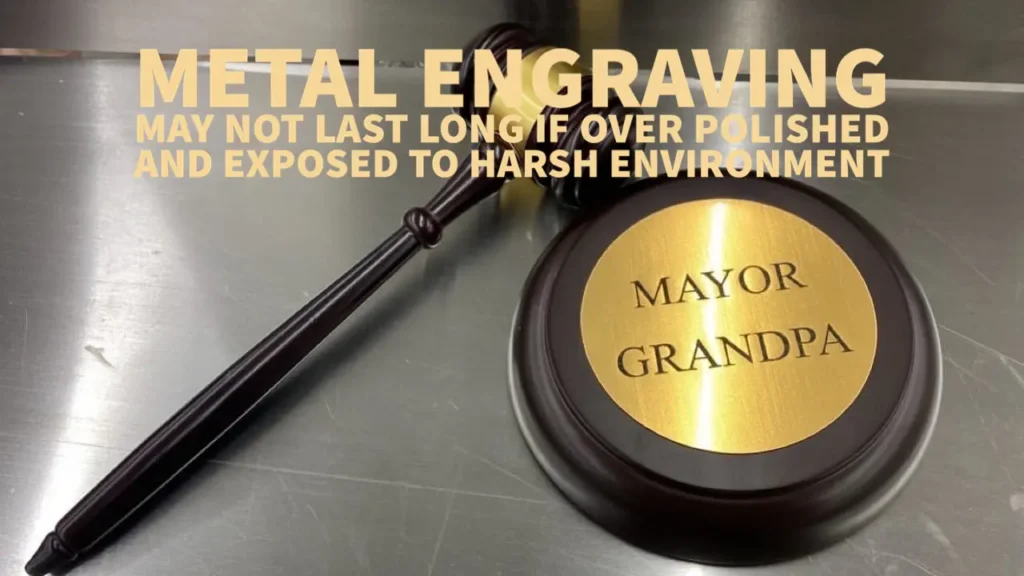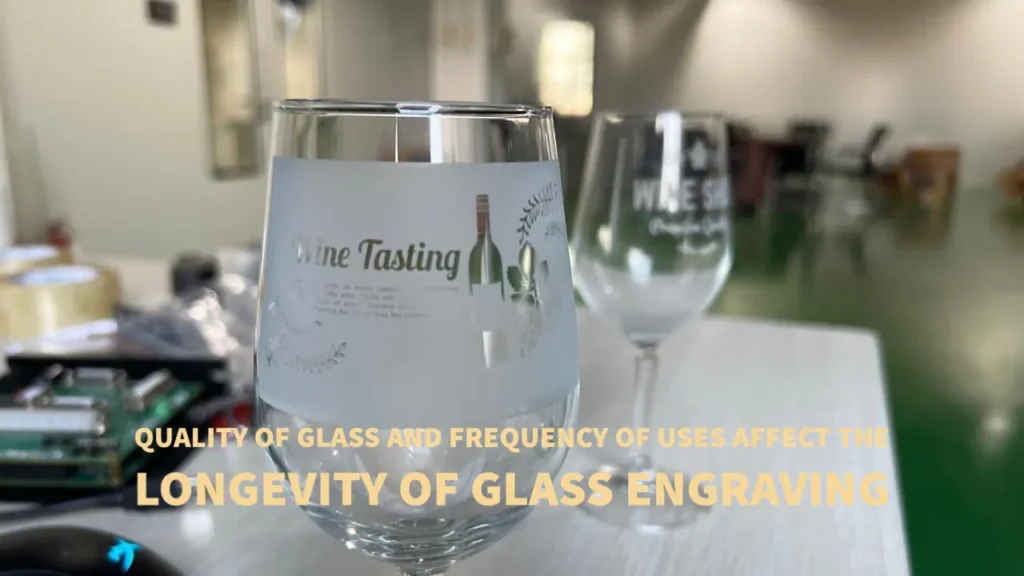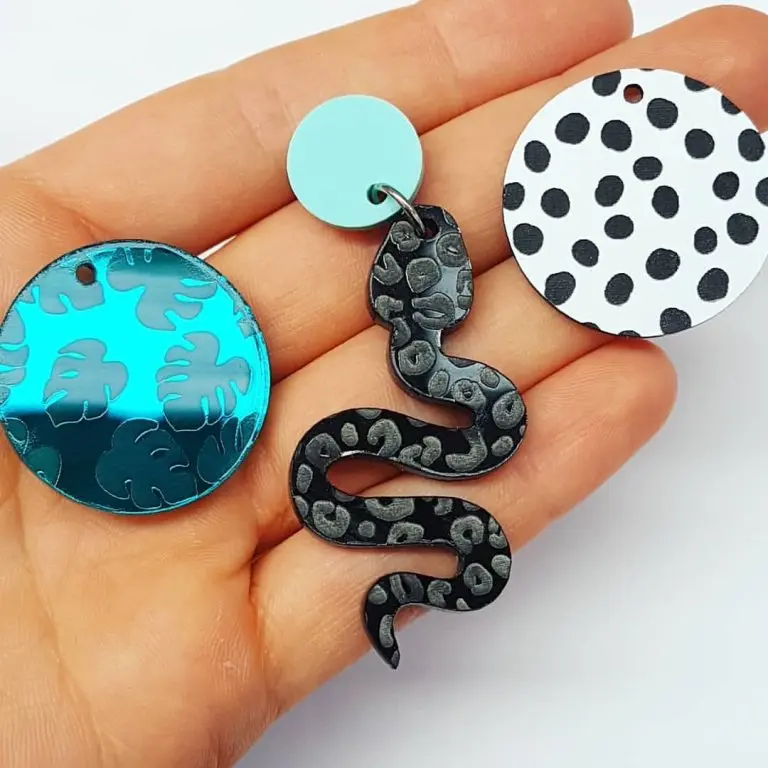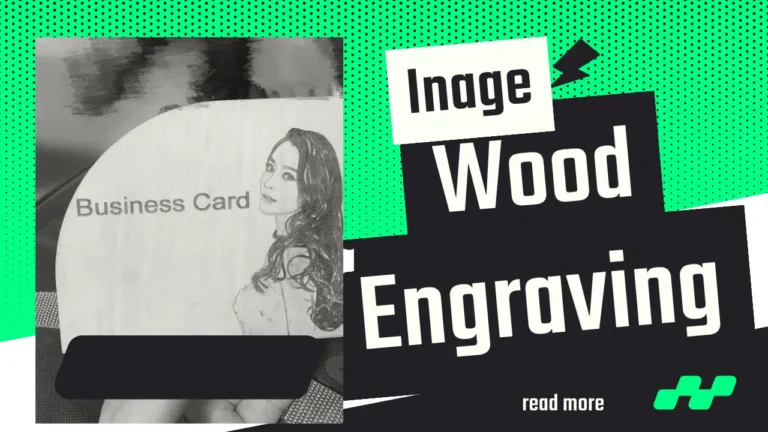Join Workshops
Physical Address
304 North Cardinal St.
Dorchester Center, MA 02124
How Long Does Laser Engraving Last?
Laser engraving is a popular and efficient method of permanently marking items with a durable and attractive design.
The laser beam used for engraving is highly precise and very powerful, allowing for a wide range of customization in both materials and designs. It is also extremely durable, making it a great way to mark items that will be used daily or exposed to various elements.
Laser engraving is a great choice for those who need a permanent and attractive way to mark an item.
Let us find the answer to how long the laser engraving last.
In general, laser etching is a long-lasting and durable method of engraving that can create permanent designs on a variety of materials. However, the longevity of the engraving depends on the following
- The Material being engraved
- The conditions to which it is exposed
- The quality of the engraving itself
How long does laser engraving last?
The durability of laser engraving largely depends on the material being engraved and the conditions to which it is exposed. Generally speaking, Itis a long-lasting and durable method of engraving that can withstand heavy use and wear.
Here are some examples of how long laser engraving can last on different materials:
Metal Engraving
Laser engraving on metal is a popular option for creating durable and long-lasting engravings. The longevity of the engraving depends on the type of metal being engraved and the conditions to which it is exposed. For example, a stainless steel engraving on a keychain may last for decades with normal wear and tear, while a brass engraving on a trophy exposed to harsh outdoor elements may fade over time.
What causes the low durability of engraved metal?
Metal engraving is the process of carving designs or text onto a metal surface using tools such as chisels, burins, or gravers. The longevity of a metal engraving depends on various factors such as the type of metal, the depth and quality of the engraving, the environmental conditions, and the use of the object.

Here are some examples where metal engravings may not last a long time:
- Soft metals: Soft metals like copper, brass, or aluminum can be easily engraved but are prone to wear and tear. Over time, the engraved lines can become shallower, and the design may lose its sharpness.
- Shallow engraving: Engraving that is not deep enough can wear off quickly, especially on objects that are frequently handled or exposed to the elements. For example, a shallow engraving on a keychain may wear off over time from constant use.
- Environmental conditions: Engravings on metal objects that are exposed to harsh environmental conditions like moisture, sunlight, or extreme temperatures may deteriorate faster. For instance, an engraved metal plaque on an outdoor bench may become faded or corroded over time due to exposure to rain, sun, and other elements.
- Over-polishing: Over-polishing a metal surface can lead to the gradual loss of engraved lines or even the complete removal of the design. For example, an engraved silver ring that is frequently polished may lose its design over time.
In summary, metal engravings may not last long when done on soft metals, shallow engraving, exposed to harsh environmental conditions, or over-polishing. To ensure the longevity of metal engravings, it is important to use durable metals, engrave deep enough, and protect the objects from harsh environmental conditions.
Glass Engraving
Laser engraving on glass is a delicate process that can create beautiful and intricate designs. The engraving is typically permanent and will last as long as the glass itself. However, if the glass is exposed to harsh conditions, such as extreme heat or sudden impacts, the engraving may crack or chip over time.

Glass engraving is a decorative technique that involves etching or carving designs, patterns, or words onto the surface of the glass. While it is generally a durable form of art, there are a few factors that can cause the engraving to wear or fade over time.
What causes the low durability of engraved glass?
Here are some examples where glass engravings may not last a long time:
- Quality of Glass: The quality of the glass used for engraving is a crucial factor in determining its longevity. Glass that is thin or fragile can be prone to cracking or chipping, which can damage the engraving. Similarly, glass that has impurities or flaws may cause the engraving to be less precise or to wear more quickly.
- Type of Engraving: There are different techniques used for engraving glass, and some are more durable than others. For example, sandblasting and acid etching are known to produce deeper, more lasting engravings than laser etching or surface etching. Deep engraving will be more long-lasting than shallow engraving.
- Exposure to Elements: If the glass is exposed to harsh elements like direct sunlight, water, or chemicals, the engraving may fade or wear more quickly. For example, a glass vase with an engraved design may lose its detail over time if it is exposed to sunlight or placed in a dishwasher.
- Frequency of Use: If the engraved glass item is used frequently, such as a glass mug or wine glass, the engraving may wear away over time due to the constant handling and washing.
Here are some examples:
- A glass mug with a shallow surface engraving that is used daily may show signs of wear and fading after a few months.
- A glass trophy with a deep sandblasted engraving may last for decades if it is properly cared for and displayed in a safe place.
- A glass window with a laser-etched design may fade or become less visible over time if it is exposed to sunlight or harsh weather conditions.
Overall, the durability of glass engraving depends on various factors, including the quality of glass, type of engraving, exposure to elements, and frequency of use. By considering these factors and taking proper care of the engraved glass item, it is possible to ensure that the engraving lasts for a long time.
Wood Engraving
Laser engraving on wood is a popular choice for creating personalized gifts and decorative items. The longevity of the engraving depends on the type of wood being engraved and the conditions to which it is exposed. For example, a laser-engraved wooden cutting board that is washed frequently and exposed to moisture may fade over time, while a laser-engraved wooden picture frame displayed indoors may last for decades.
What causes the low durability of engraved wood?
Wood engraving is a printmaking technique that involves carving a design or image into a block of wood and then printing the design onto paper or other materials. While wood engraving can produce beautiful and detailed prints, the longevity of these prints can vary depending on a number of factors.

One factor that can affect the longevity of wood engravings is the type of wood used. Some types of wood, such as pine or spruce, are more prone to decay and may not hold up as well over time. In contrast, hardwoods like maple or cherry are more durable and can withstand the test of time better.
Another factor that can impact the longevity of wood engravings is the quality of the ink and paper used for printing. If the ink or paper is of poor quality, the print may fade or deteriorate more quickly over time.
Additionally, how the wood engraving is stored and displayed can also affect its longevity. If the print is exposed to direct sunlight or humidity, it may fade or warp more quickly. If the print is not stored in a protective sleeve or frame, it may become damaged or creased over time.
For example, let’s say an artist creates a wood engraving using a soft wood like pine and prints the image onto low-quality paper using cheap ink. The artist then hangs the print on a wall in a room that receives direct sunlight for several hours a day. In this case, the wood engraving is not likely to last very long and may start to fade or deteriorate within a few years.
Here’s the best laser engraver that can engrave wood at 4000 mm/s!
On the other hand, if an artist creates a wood engraving using a hardwood like maple and prints the image onto high-quality paper using archival ink, and then stores the print in a protective sleeve or frame away from direct sunlight, the engraving is more likely to last for many years or even centuries.
Overall, the longevity of wood engravings can vary depending on several factors, including the type of wood used, the quality of ink and paper used for printing, and how the print is stored and displayed over time.
Plastic Engraving
Laser engraving on plastic is a durable option that can withstand heavy use and wear. The longevity of the engraving depends on the type of plastic being engraved and the conditions to which it is exposed. For example, a laser-engraved plastic name tag worn daily may last for years, while a laser-engraved plastic outdoor sign may fade over time due to exposure to UV rays.

What causes the low durability of engraved plastic?
Plastic engraving may not last long in certain situations due to a variety of factors such as the type of plastic material used, the quality of the engraving, and the conditions in which the engraved item is used or stored.
Here are some examples:
- Outdoor signage: If plastic engraving is used for outdoor signage, it may not last as long as other materials such as metal or stone. This is because plastic is more susceptible to damage from weather conditions such as rain, wind, and sun exposure. Over time, the engraving may fade, crack, or peel off.
- High-wear items: Plastic engraving on items that are frequently handled or subject to abrasion may also not last long. For example, plastic engraved keychains or phone cases may quickly wear down and become illegible after being in a pocket or purse for an extended period.
- Low-quality plastic: If the plastic material used for engraving is of low quality, it may not hold up over time. The engraving may be shallow or uneven, making it susceptible to fading or wearing off quickly.
- Chemical exposure: Plastic engraving may also not last long if the engraved item is exposed to certain chemicals. For example, if an engraved plastic label is used on a chemical container and comes into contact with a corrosive substance, the engraving may be damaged or erased.
In summary, plastic engraving may not last long in situations where it is exposed to weather conditions, high wear, low-quality plastic, or chemicals. It is important to consider the specific use case and conditions when selecting the material for engraving to ensure longevity.
Tips to increase the durability of laser engravings
To enhance the durability of the laser engravings, here are some best practices to consider:
- Choose the Right Material: The material you choose for your laser engraving can have a significant impact on its durability. Some materials, such as metals, are naturally more durable than others, like plastics. So, it’s essential to consider the properties of the material before engraving.
- Opt for High-Quality Settings: The settings you use when engraving can also affect the durability of the mark. Using high-quality settings, including a high power setting and low speed, can help create a deeper and more durable mark. For instance, engraving metal with low speed and high power can result in a deeper mark that is resistant to wear and tear.
- Clean the Surface: The surface you intend to engrave should be clean and free from any contaminants such as oils, dirt, or debris. These impurities can interfere with the laser beam’s ability to engrave a clean and deep mark on the material, which can decrease its durability.
- Use Protective Coating: Applying a protective coating after engraving can also help increase the durability of the mark. For instance, you can use clear epoxy resin to cover the engraved surface to protect it from scratches and other types of damage.
- Use a Suitable Font: The font you use for engraving can also affect the durability of the mark. Fonts that are thin and delicate can be challenging to read and may not last as long as bold, blocky fonts. So, it’s best to choose a font that is legible and has thicker lines, ensuring that the mark is easy to read and durable.
Example: Suppose you are engraving a metal plate with a company logo that will be attached to a piece of machinery. In that case, you may want to consider using high-quality settings, such as low speed and high power, to ensure a deep and durable mark. Additionally, you could clean the surface with isopropyl alcohol to remove any contaminants before engraving. After engraving, you can apply a clear epoxy resin to protect the engraved surface from scratches and other types of damage. Lastly, you could opt for a bold and blocky font that is legible and easy to read, ensuring the mark is durable and long-lasting.
Let’s Conclude
In conclusion, laser engraving is a highly versatile and durable method of marking materials, and it is widely used in various industries such as manufacturing, arts, and crafts. To ensure the longevity of laser engraving, it is crucial to follow the best practices such as selecting appropriate materials, optimizing the laser settings, and using high-quality equipment. Additionally, regular maintenance of the equipment and proper storage of engraved items can significantly increase the lifespan of laser engraving. By following these best practices, individuals and businesses can enjoy the benefits of laser engraving for years to come.







